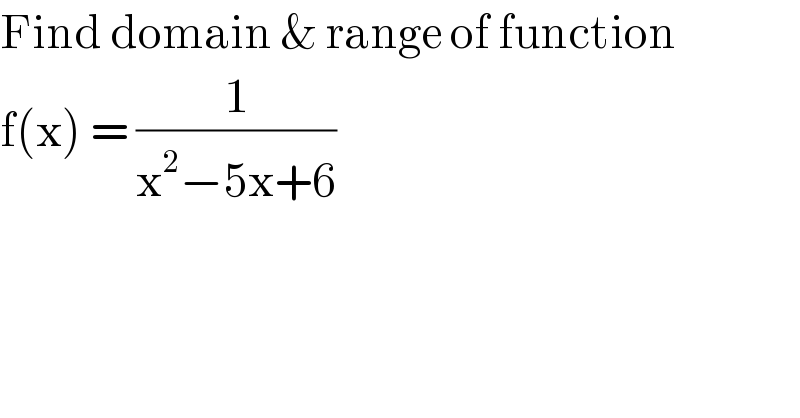
Question and Answers Forum
Previous in Relation and Functions Next in Relation and Functions
Question Number 96383 by bobhans last updated on 01/Jun/20

Answered by john santu last updated on 01/Jun/20
![The domain consists of all real number except 2 and 3. To determine the range , set y = (1/(x^2 −5x+6)) and solve for x. ⇒x^2 −5x+(6−(1/y)) =0 This has solution when and only when b^2 −4ac = 25−24+(4/y)≥0 This holds if only if (4/y)≥−1 this holds when y > 0 , and if y<0 , when y ≤ −4. Hence the range is (−∞,−4 ] ∪ (0, ∞ )](Q96384.png)
Commented bybemath last updated on 01/Jun/20
thank you for the explanation
